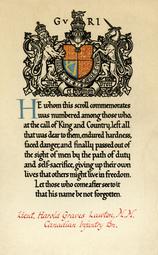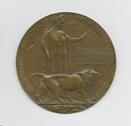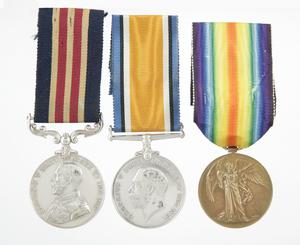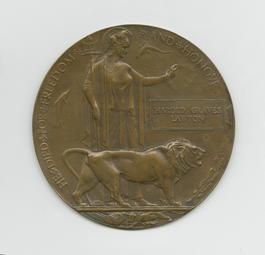Unit
13th Canadian Infantry Battalion (Royal Highlanders of Canada)
Branch
Infantry
Service Component
Canadian Expeditionary Force
Service Number
132237
birth
1894/11/28
Saint John, New Brunswick, Canada
death
1922/11/12
Montreal, Quebec, Canada
grave
Mount Royal Cemetery, Montreal, Quebec
Gender
Male
Harold Graves Lawton was born in Saint John, New Brunswick, on 28 November 1894. He was the son of William and Alice Lawton. His father was an insurance broker.
A surveyor, Lawton enlisted in the 73rd Canadian Infantry Battalion (Royal Highlanders of Canada) in Montréal, Quebec, on 4 September 1915. After initial training in Canada, he embarked for England with his unit on RMS Adriatic. The ship left Halifax, Nova Scotia, on 31 March 1916 and arrived in Liverpool on 9 April 1916. The 73rd Battalion received further training and preparation in England before proceeding to France on 12 August 1916.
On 10 December, Lawton was made an acting corporal, and three months later, he was promoted to sergeant. Lawton was transferred to the 13th Canadian Infantry Battalion (Royal Highlanders of Canada) on 19 April 1917 and joined the unit in the field the same day.
On 9 July 1917, he was awarded the Military Medal for his actions as commander of the Lewis gunners of “A” Company, 73rd Battalion during the Battle of Vimy Ridge (9–12 April 1917). His citation notes that, during the battle, Lawton visited his often-isolated men without regard for heavy enemy fire. In doing so, he kept his men’s moral up and all guns in action. The citation further notes that Lawton remained on duty for three days and nights without sleep during the battle.
A month after receiving the Military Medal, Lawton was sent on a musketry course, and he was granted 10 days’ leave in Paris soon afterwards. On 28 April 1918, he was made a temporary lieutenant. Lawton received a bullet wound to the right side of the groin during the Canadian attack on the Drocourt-Quéant Line on 2 September 1918. He was exceptionally fortunate; in passing through his body, the bullet did not hit any bone or major blood vessels. Nor did it damage any nerves. Lawton’s good fortune was tempered by the fact that he was also gassed. A medical examination conducted on 2 October 1918 found that gas poisoning had caused no permanent injury. Although Lawton had recovered from his wound so well by October that he was considered to be fit to return to general service, he did not return to the field. In December 1918, he was officially demobilized in the wake of the end of the war. Lawton died in Montréal on 12 November 1922 from a combination of diabetes, heart failure and pulmonary oedema. Military officials attributed his death to his war service.
Harold Graves Lawton is buried in Mount Royal Cemetery, in Montréal.
Military Medal
“For conspicuous gallantry during the Operations on VIMY RIDGE from the 9th to 13th April, 1917. This N.C.O. was in charge of the machine guns of “A” Coy. and during these operations his work was especially noticeable for its efficiency. He established his machine gun posts under very heavy fire, and when at times some of the posts were practically isolated by the enemy fire, he visited them regularly, absolutely disregarding his personal safety, and was instrumental in keeping all guns in action, especially on two occasions when direct hits were obtained on gun positions, and guns put out of commission. He remained on duty for three days and three nights without sleep and was a constant source of inspiration to the Lewis gunners under him. It is considered that he is fully deserving of an immediate reward.”
– Canada, Military Honours and Awards Citation Cards, 1900–1961






